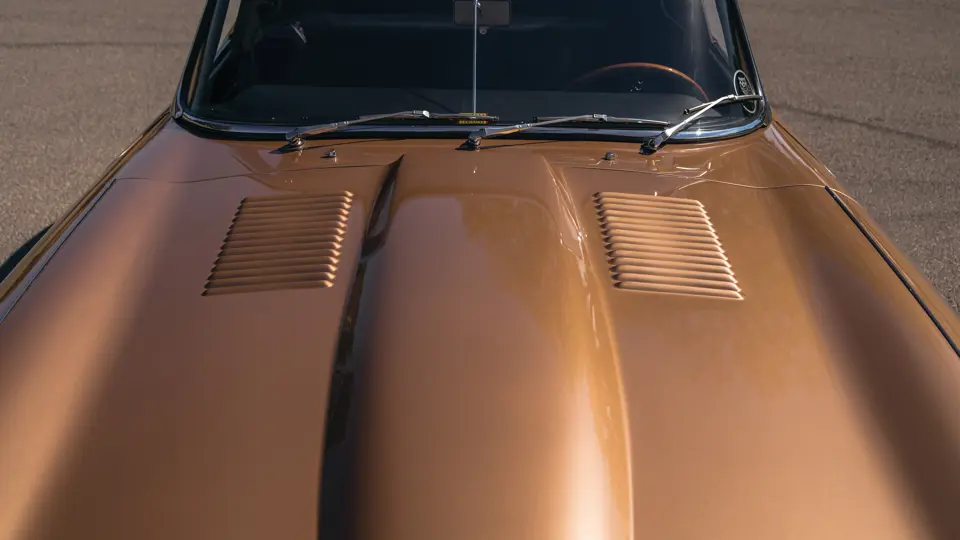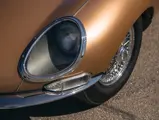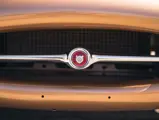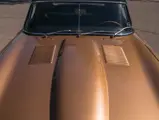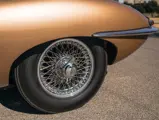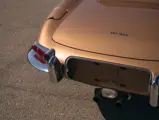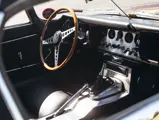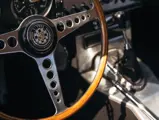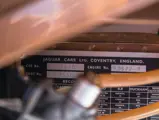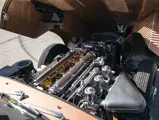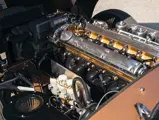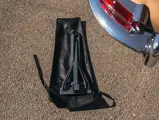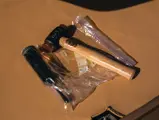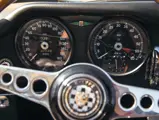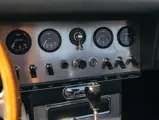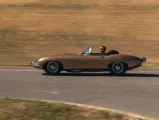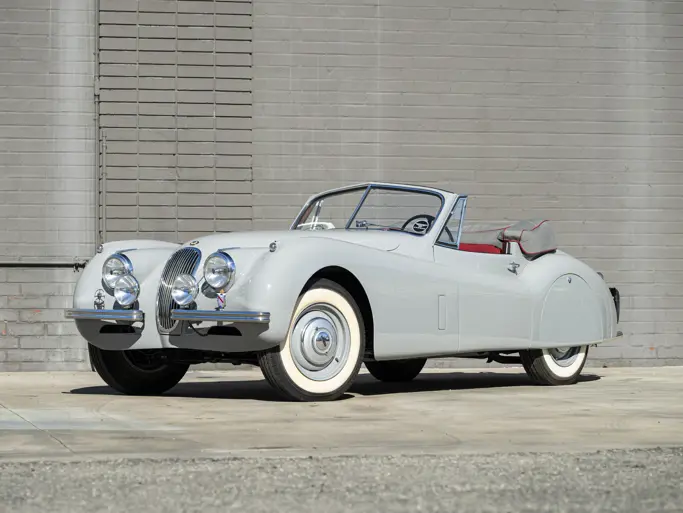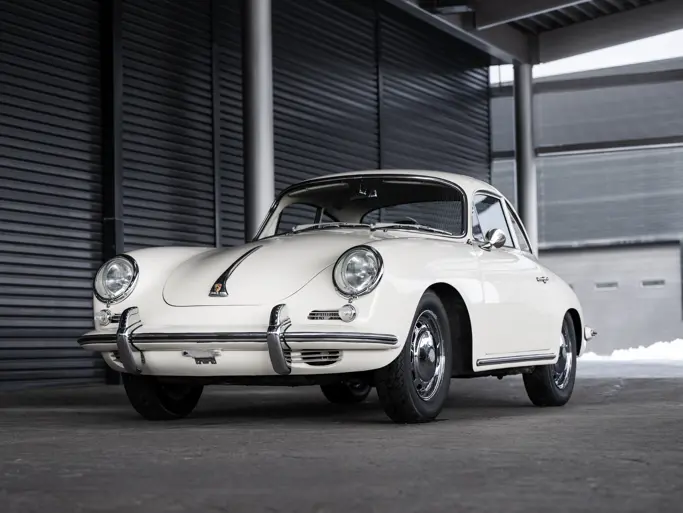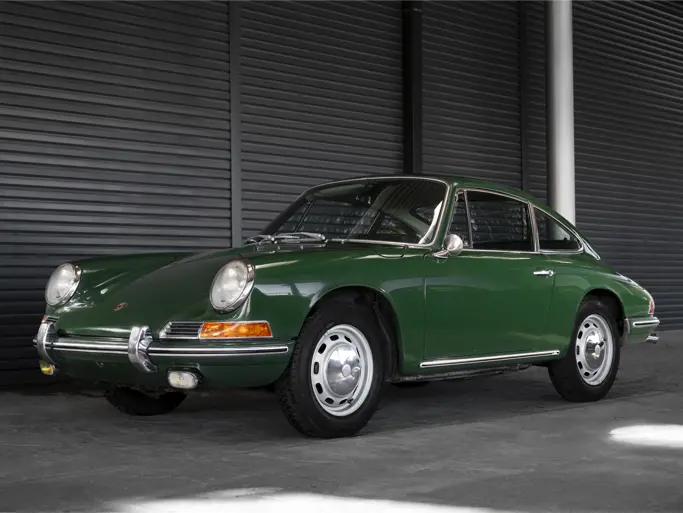265 hp, 3,781 cc DOHC six-cylinder engine with three SU carburetors, four-speed manual transmission, independent front suspension with double wishbones, torsion bars, and sway bar, independent rear suspension with coil springs, double wishbones, and sway bar, and four-wheel hydraulic disc brakes. Wheelbase: 96 in.
Jaguar had enjoyed great success with its XK series of sports cars, but the E-Type was not, as might have been expected, a continuation of the XK150. Instead, the XKE (as it was dubbed in the U.S.) was based largely upon a pair of prototype racing cars, E1A and E2A, which themselves borrowed heavily from the very successful monocoque-bodied D-Type racing chassis. Following earlier precedent, there would be two versions of the new E-Type, an open two-seater, or roadster, and a fixed head coupe, both with sleek and curvaceous bodies designed by Malcolm Sayer, a pioneer in automotive aerodynamics.
Under the E-Type’s broad front-hinged bonnet was essentially the same 3.8-liter twin-cam inline six as in its predecessors, producing 265 brake horsepower. The gearbox was a four-speed manual without synchronization on the first gear (known as the “Moss” box). Suspension, though, was thoroughly modern—independent all around. There were powerful four-wheel disc brakes, inboard at the rear to reduce unsprung weight. Performance was astonishing, especially for its price. The E-Type had real 150-mph capability.
The car offered here, chassis number 876520, was delivered new to G.P. Edgar of New York. It reportedly enjoyed dry indoor care for 32 years. In previous ownership, the car received an extensive overhaul by the renowned marque specialist Richard Jenkins. This work included a rebuild of the original engine, retaining the original pistons; the valves and cylinder heads were updated to allow the use of unleaded fuel. The original gearbox was removed and rebuilt, and a new wiring harness was installed as well.
Refinished in stunning Opalescent Bronze, the car also features a black top and interior, all consistent with its JDHT certificate. The meticulous attention to detail is evident in all of the work completed on this remarkably early example.
Offered with books, tools, and an assortment of paperwork detailing the work completed, this is surely an excellent example of the desirable early flat-floor E-Type.
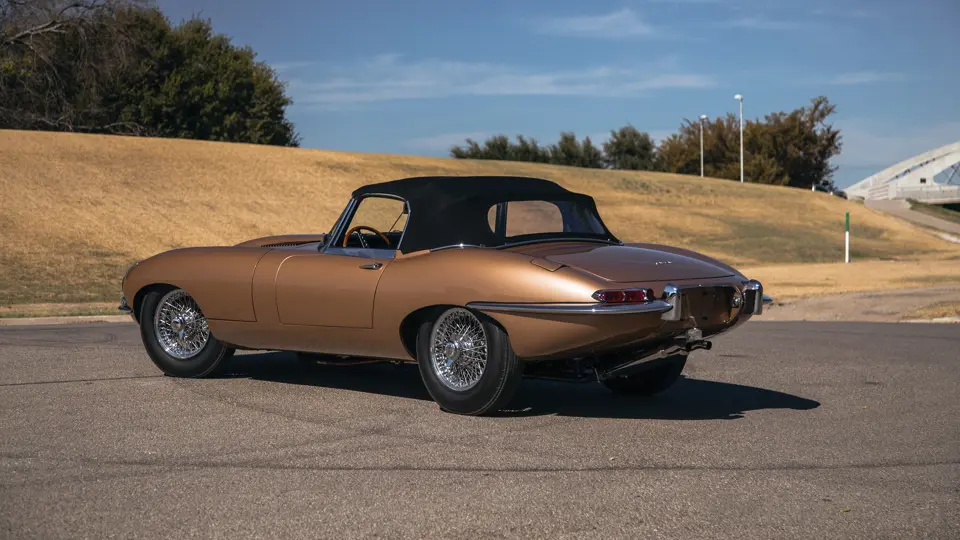



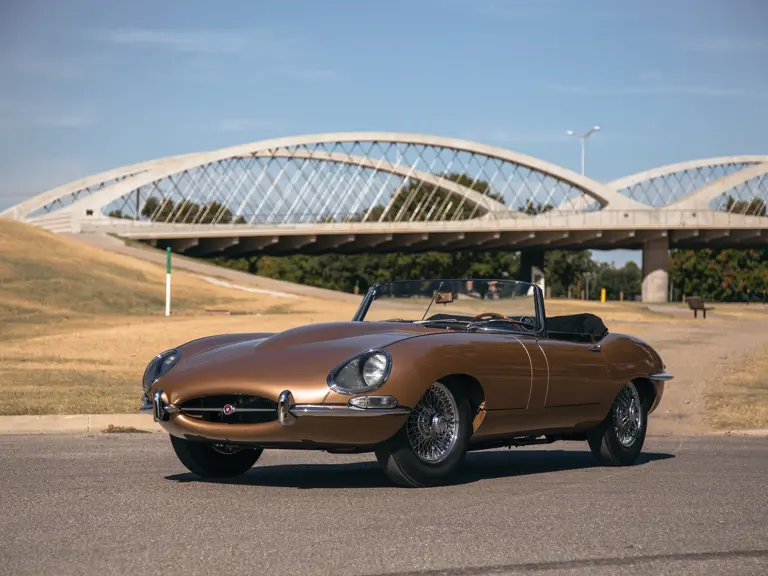
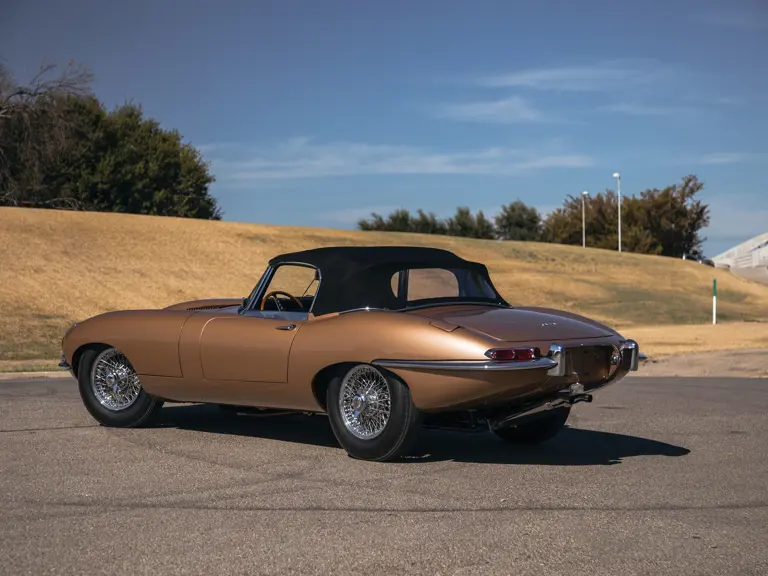



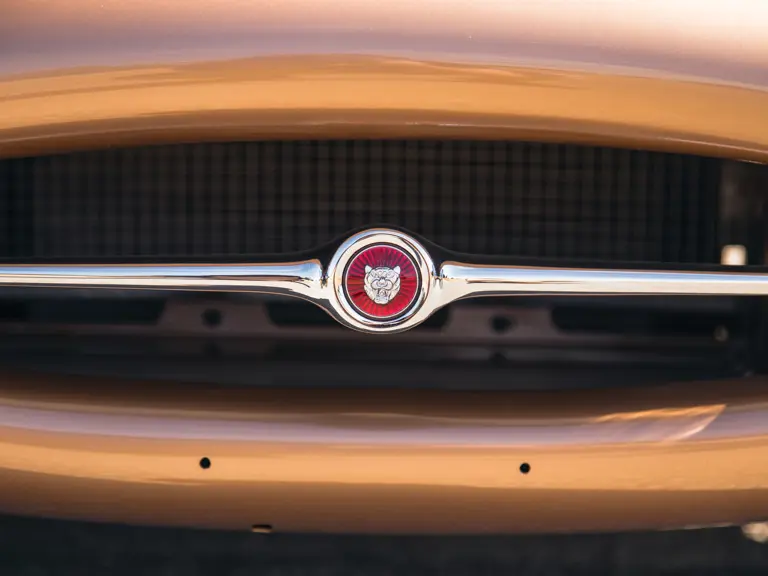
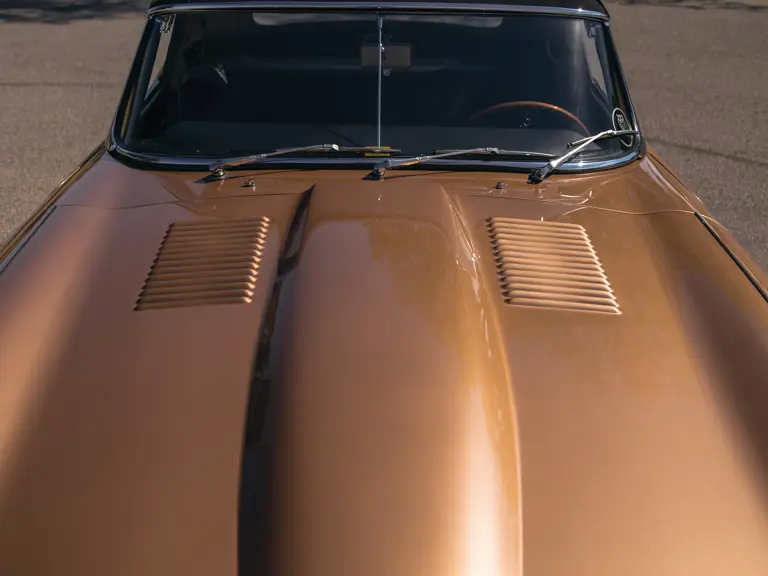

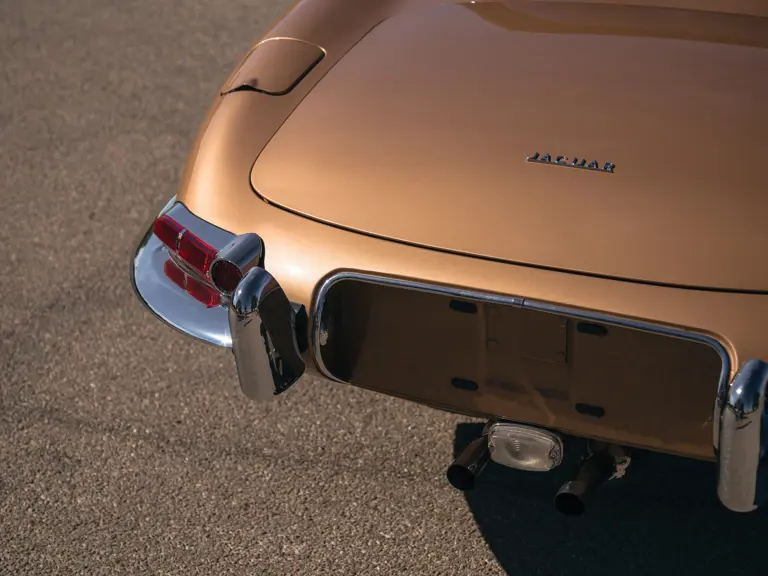
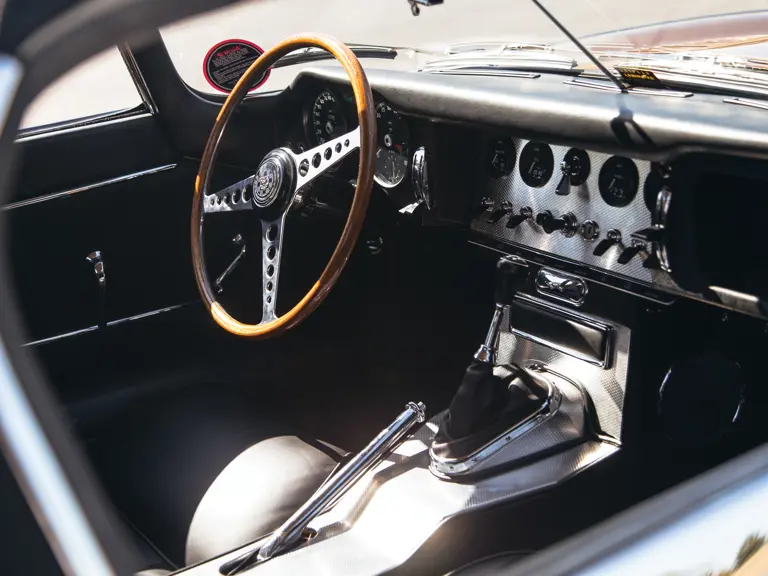


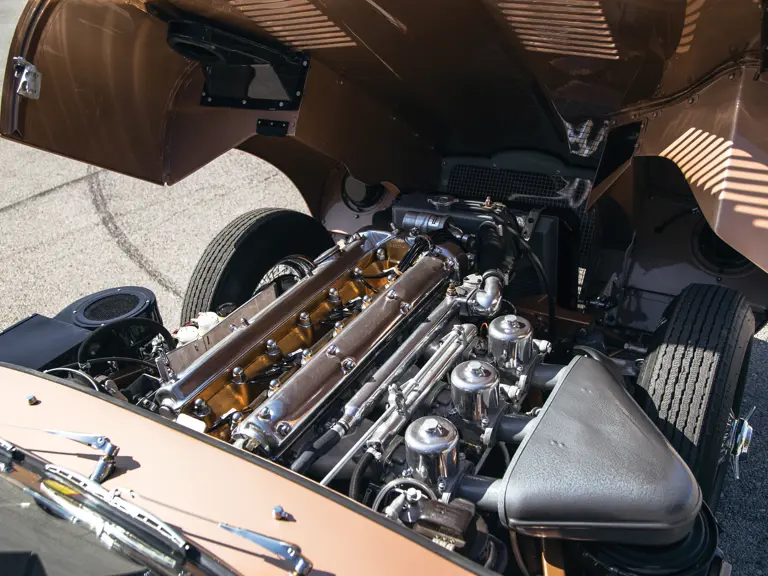
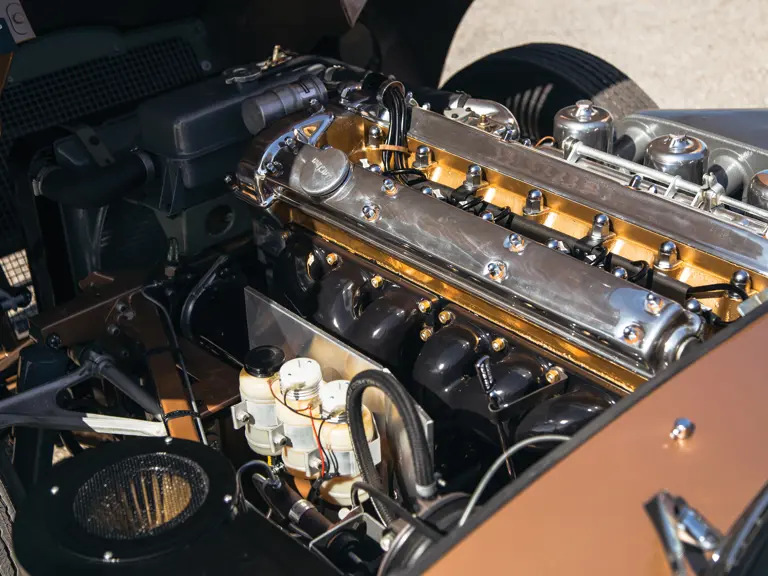
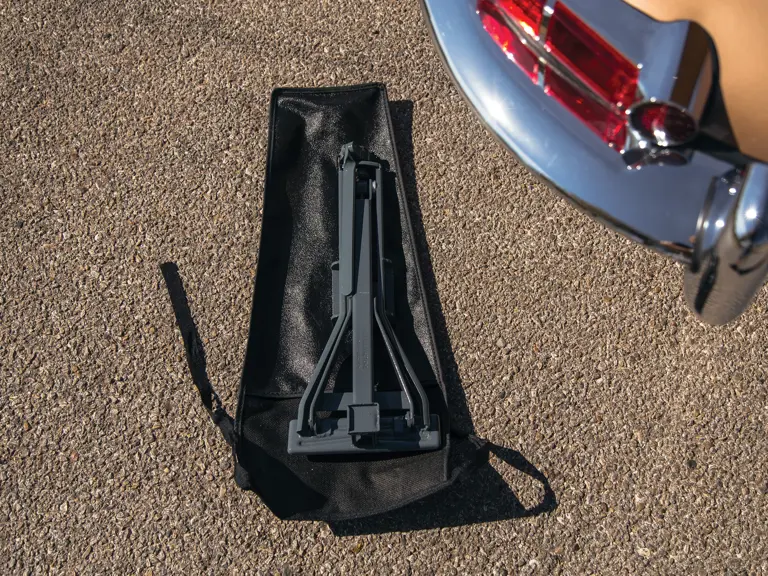
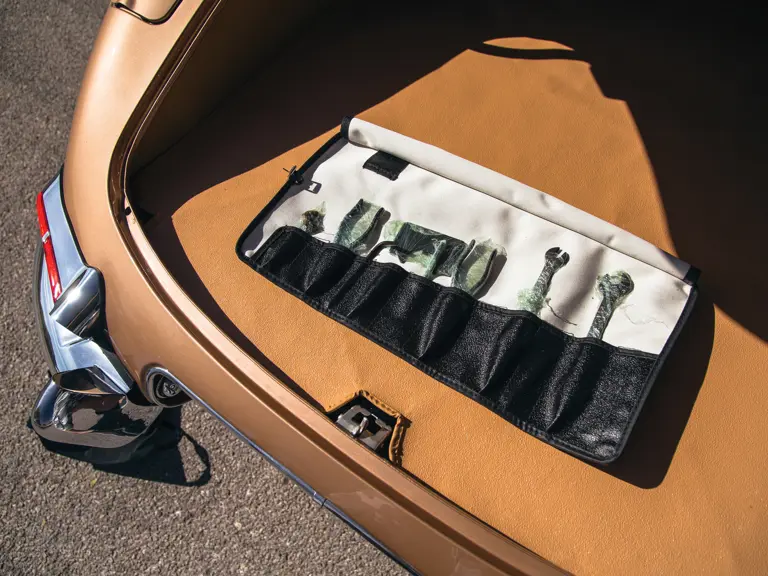
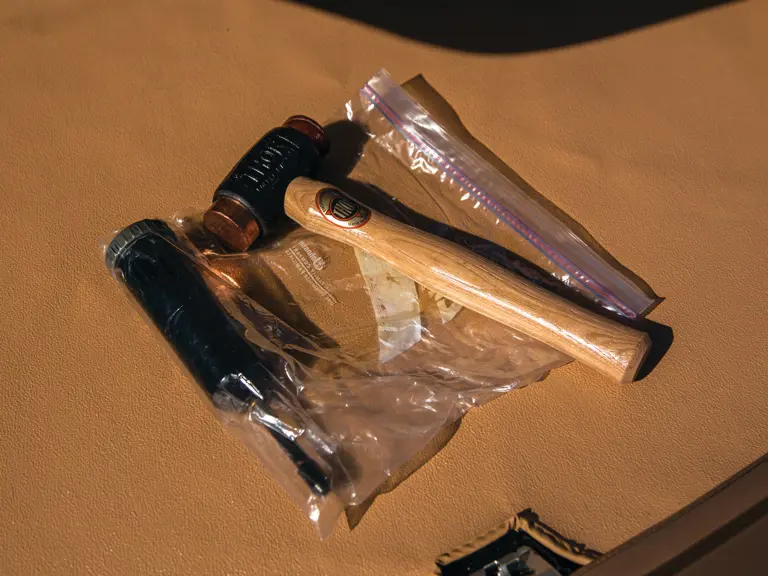
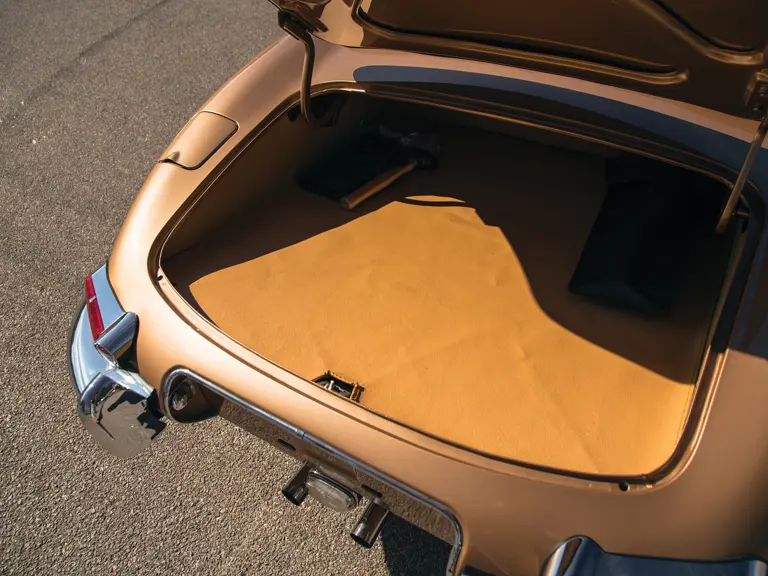





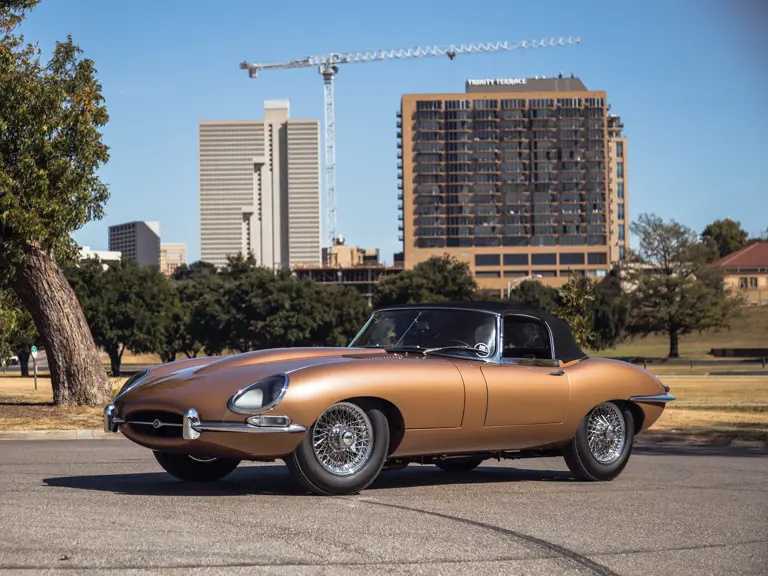
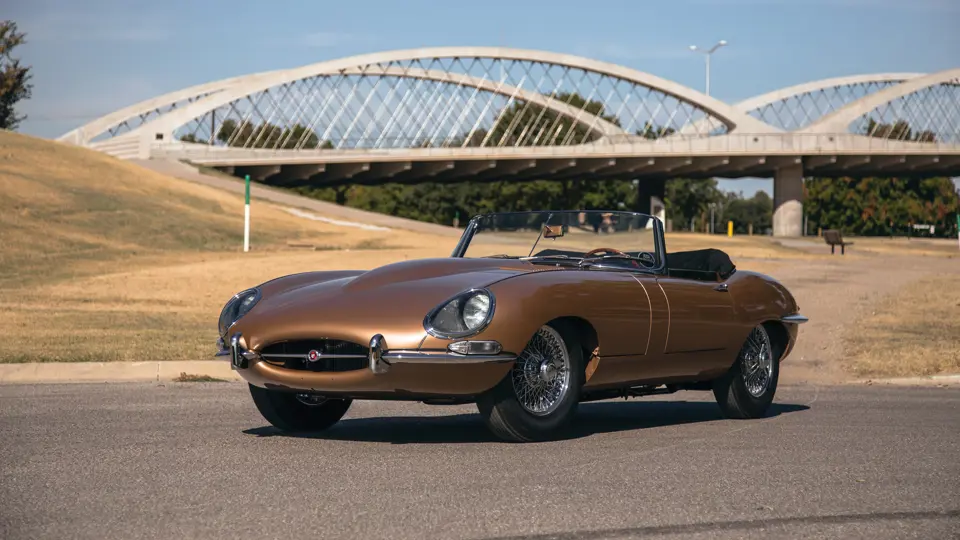
 | Phoenix, Arizona
| Phoenix, Arizona


